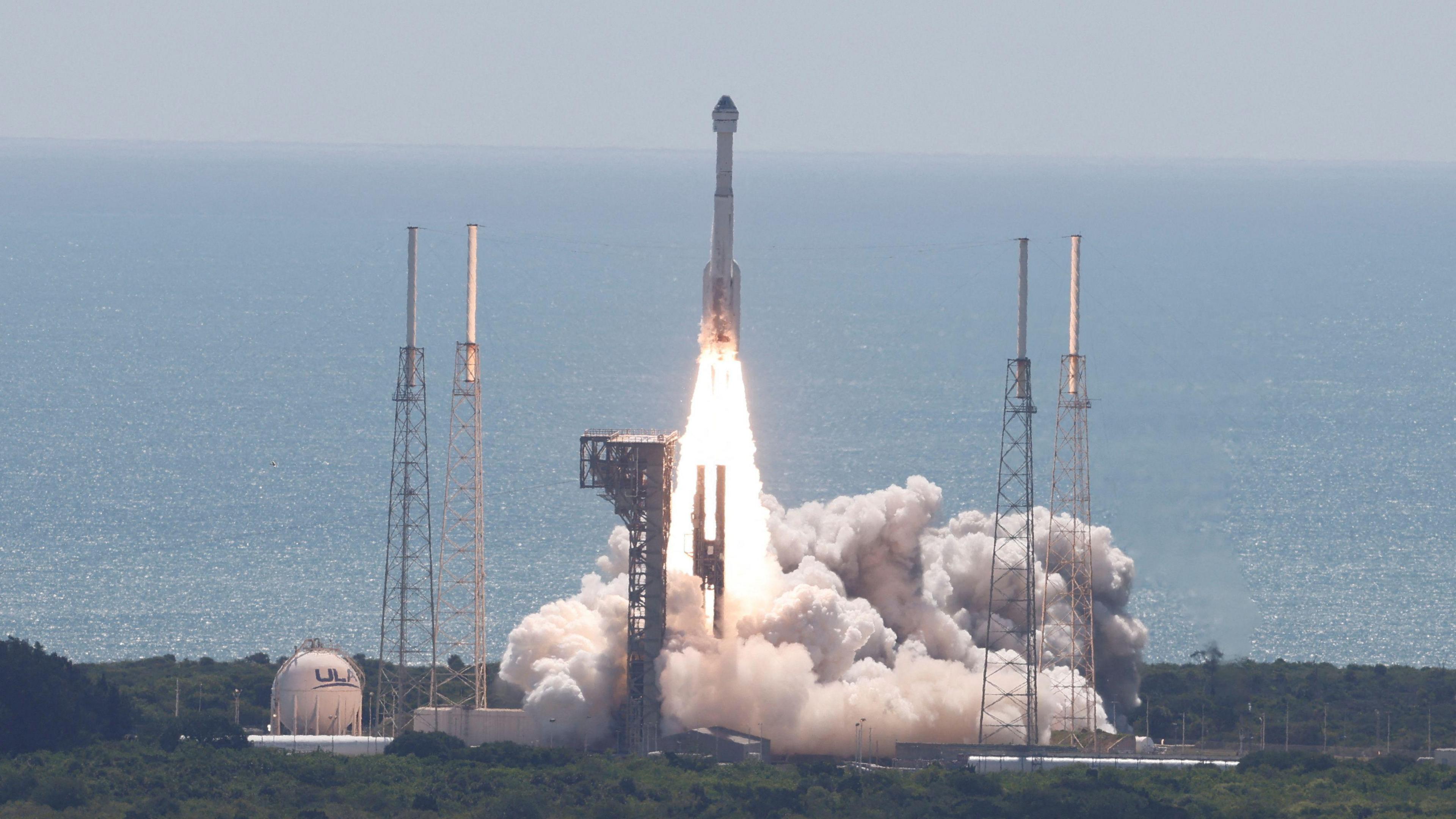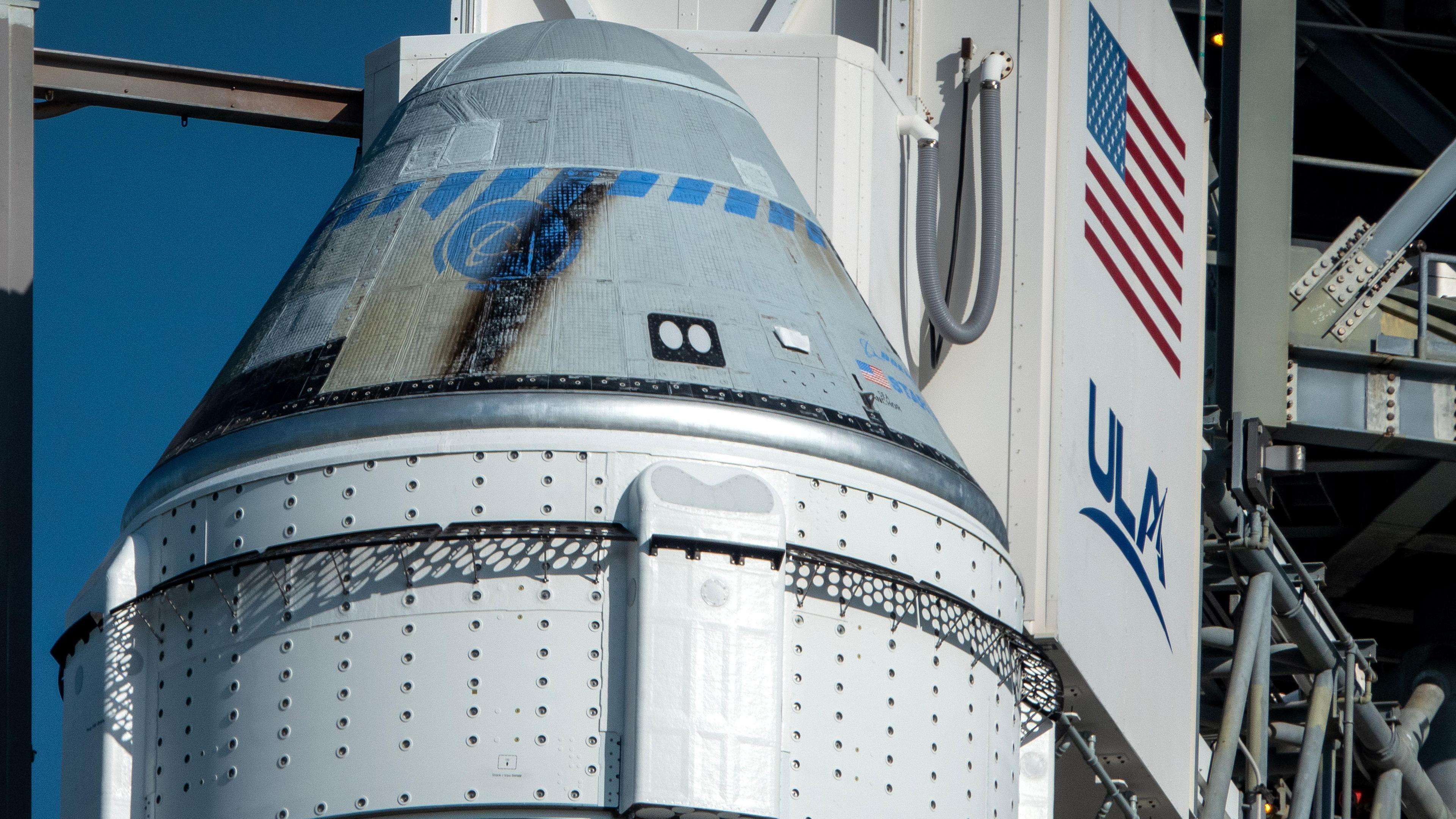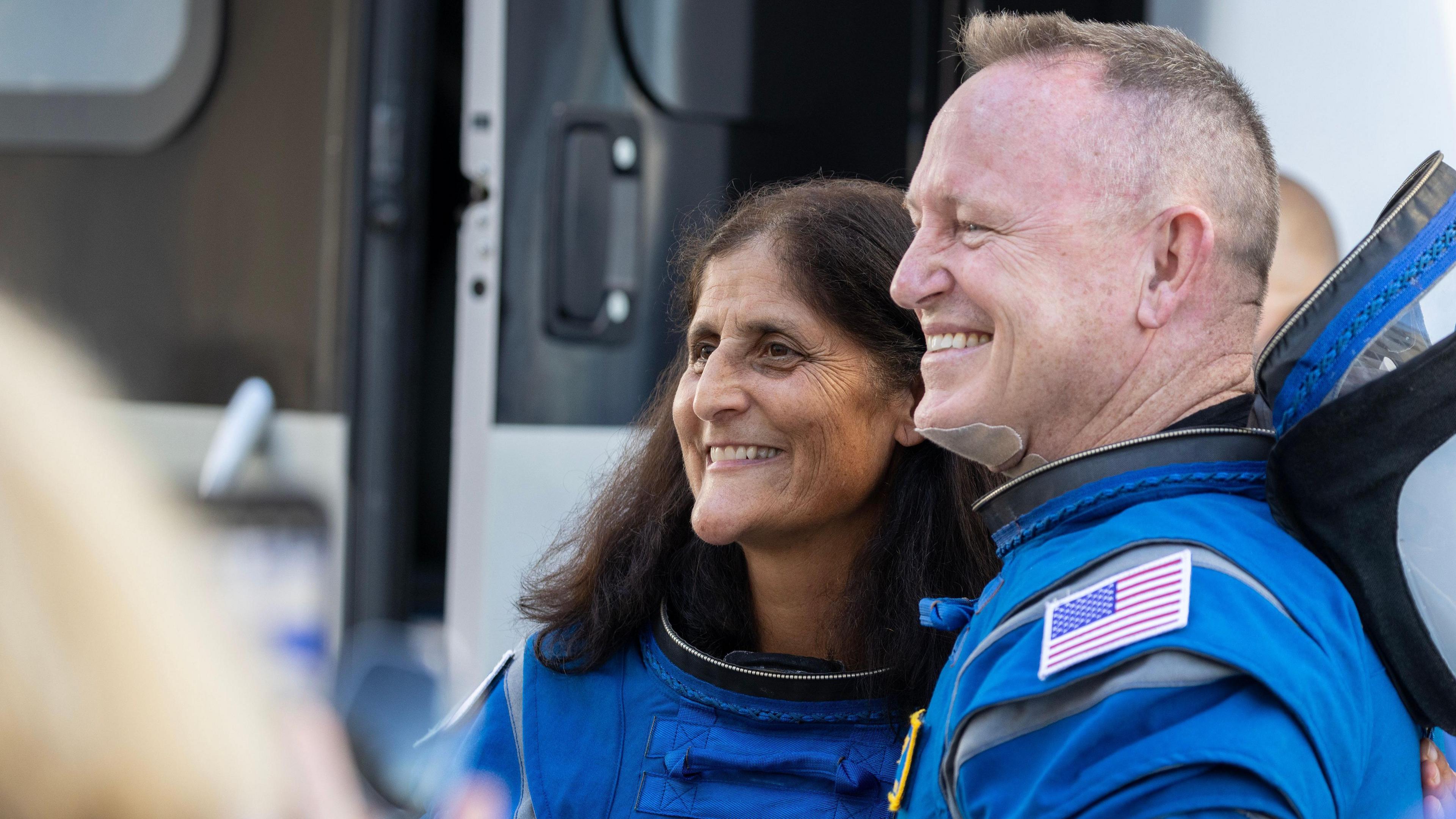Delayed Boeing Starliner docks into ISS

Blast off: The Boeing Starliner setting off for the ISS
- Published
After multiple delays throughout the last month, the new Boeing Starliner spacecraft has successfully docked on the International Space Station (ISS).
The Starliner carried two astronauts to the ISS, they're going to spend a week up in space before coming back down to Earth.
Nasa asked Boeing - which is a private company which makes planes - to develop the Starliner so that they could have a US-made spacecraft to transport crew to and from the ISS.
More space stories:
Oldest person goes to space on Blue Origin rocket
- Published20 May 2024
Euclid telescope: Biggest snaps of universe ever taken from space
- Published23 May 2024
NASA has launched a new climate mission
- Published12 February 2024
What is the Boeing Starliner?

The Starliner will undergo a week of tests while docked at the ISS
The Boeing Starliner is a capsule designed to transport crew and equipment into space.
It's made up of two main sections:
A reusable crew module, which can fit up to the seven astronauts inside
A service module, with thrusters and engines to power the craft
In order to get to space, it has to 'sit' on top of a big rocket, which powers the initial launch to orbit.
It has been designed to be as safe as possible, featuring an escape system that propels the crew away from the rocket if there are any problems during a launch.
What happened during the Boeing Starliner launch?

Two of Nasa's most experienced astronauts are on the flight
For the launch, the Starliner was attached to an Atlas V rocket, the longest serving rocket for space missions.
Just two crew members were onboard the Starliner for this launch - Nasa astronauts Barry “Butch” Wilmore and Sunita "Suni" Williams.
The Starliner docked with the ISS - which means it attached to it - at 06:35 in the morning, UK time.
After a week on the ISS, Butch and Suni will return and test the Starliner with a hard landing, which means the craft itself will touchdown on Earth, with parachutes slowing it down safely before it reaches the ground.
If it's successful, it will be the first time a US capsule has been able to complete a hard landing.
